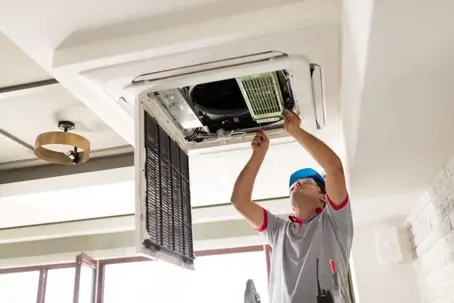At Caledonian Mechanical, we believe in helping our customers understand what goes into a residential inspection when replacing or installing new HVAC/R equipment. Every city and county across the Central Valley has its own building codes and inspection standards. Our team is experienced in working across jurisdictions—including Fresno, Clovis, Madera, Visalia, Merced, and more—so we know exactly what’s required to pass inspections the first time, every time.
Here’s a breakdown of what inspectors look for—and how we make sure everything is done right:
Gas Line and Safety Features
Inspectors look closely at gas line setups, ensuring the correct size of black iron piping is used and that a flexible gas valve is properly installed with a sediment trap. This sediment trap is key—it helps filter out debris from entering your system, which protects your gas valve and prolongs the life of your equipment.
Condensate Lines and Drainage
Drainage is another major inspection point. Inspectors require that all condensate lines be made from UV-rated Schedule 40 PVC and properly pitched to ensure effective drainage. We make sure every install includes the right P-trap setup and terminates based on local code—some cities require discharge to the exterior roof, while others allow vent pipe tie-ins. We know the code differences and install accordingly.
Electrical Inspections and Safety
Each system we install is wired with precision. Inspectors want to see proper gauge wiring, electrical disconnects, over-current protection, fuses, and correct breaker sizes in the panel. For roof-mounted units, we install OSHA-compliant service platforms when required by code for safe technician access.
HERS Testing and Title 24 Compliance
In California, many HVAC installations require HERS (Home Energy Rating System) testing and Title 24 energy compliance. This includes duct leakage tests, refrigerant charge verification, airflow testing, and more. At Caledonian Mechanical, we coordinate directly with certified third-party HERS raters to ensure your system is tested and documented properly. We schedule the HERS inspection at the right time—after installation but before the final inspection—so everything lines up with county or city expectations.
Coordinating with City and County Inspectors
Every city and county inspector has a slightly different approach and checklist. Whether you’re in Clovis, Fresno, Madera, or Tulare County, we know the ins and outs of what each jurisdiction looks for—because we’ve been working with them for years.
Here’s how we help you pass inspections smoothly:
- We handle the permit process: From submission to scheduling, we pull all necessary mechanical, electrical, or plumbing permits on your behalf.
- We schedule inspections promptly: After installation is complete, we coordinate the final inspection with the correct city or county building department.
- We prepare your system to pass: Before the inspector arrives, we do a pre-inspection walk-through to ensure every detail is to code—whether it’s strapping, labeling, securing, or test-running the system.
- We’re there when they arrive: A licensed technician from Caledonian Mechanical is present during every inspection to answer any questions and make sure the inspector sees everything done to standard.
Final Walkthrough and Customer Assurance
Once inspections are passed, we do one final walkthrough with the customer. We’ll explain how your new system operates, confirm warranty coverage, and leave you with documentation showing compliance with all HERS and Title 24 requirements.
Why This Matters
Each inspection step ensures your HVAC system is installed safely, legally, and efficiently. Poorly coordinated installs can result in failed inspections, delays, and extra costs. With Caledonian Mechanical, you’re hiring a team that understands how to do it right—because we’ve done it across the entire Central Valley, from city permits to county compliance.

